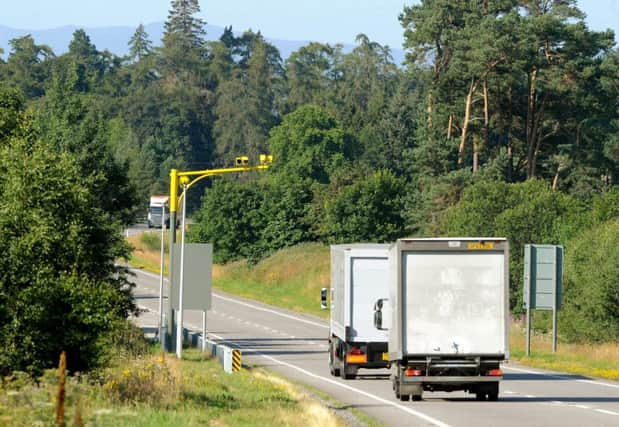Deaths down by one third since A9 cameras installed


There were eight deaths in the first 18 months of camera operation compared to the previous average of 12, the latest quarterly figures showed.
There were no deaths between Dunblane and Perth, where the average was one.
Advertisement
Hide AdAdvertisement
Hide AdSerious injuries were down overall by 73 per cent, with eight such casualties against an average of 30.
The cameras, which went live in October 2014, cover the dual carriageway between Dunblane and Perth, and the single carriageway sections between Perth and Inverness.
Transport minister Humza Yousaf said the figures were “extremely encouraging”.
He said: “The latest A9 Safety Group figures indicate the route is much safer since the cameras were introduced.
“The data marks the mid-point in the three-year evaluation period and, shows over the last 18 months, four fewer people have been killed, 22 fewer seriously injured and 62 fewer people slightly injured.”
Dualling is to be completed in 2025. A new five-mile section is due to be opened south of Aviemore next summer.
Neil Greig, the Scotland-based policy and research director of motoring group IAM RoadSmart, said: “The cameras continue to deliver a safer road, with a complete fall off in excessive speeding.
“As more road-widening projects start on the A9, journey times will become more variable as roadworks increase.
Advertisement
Hide AdAdvertisement
Hide Ad“Drivers need to be aware of this, as there is no real alternative until the dualling of the road from Perth to Inverness is complete.
“The focus must now shift to improving safety on the A9 north of Inverness where the record is not so good.”
Philip Gomm, of the RAC Foundation in London, said: “Of the 50 or so average speed camera systems in Britain, the A9 project is probably the one being most closely watched.
“It covers by far the greatest length of road and has been deployed on a route which was notorious for its accidents. The early signs are encouraging and the dramatic drop in people caught speeding - and hence being fined - also helps convince drivers average speed cameras are about road safety and not raising revenue.”
Fines are paid to the UK Government, not Scottish ministers or Police Scotland.
Mike Burns, of the A9 Average Speed Cameras Are Not The Answer group, said: “With the first section of dualling due to be complete soon, we look forward to the authorities sticking to their promise to remove the first section of cameras.”